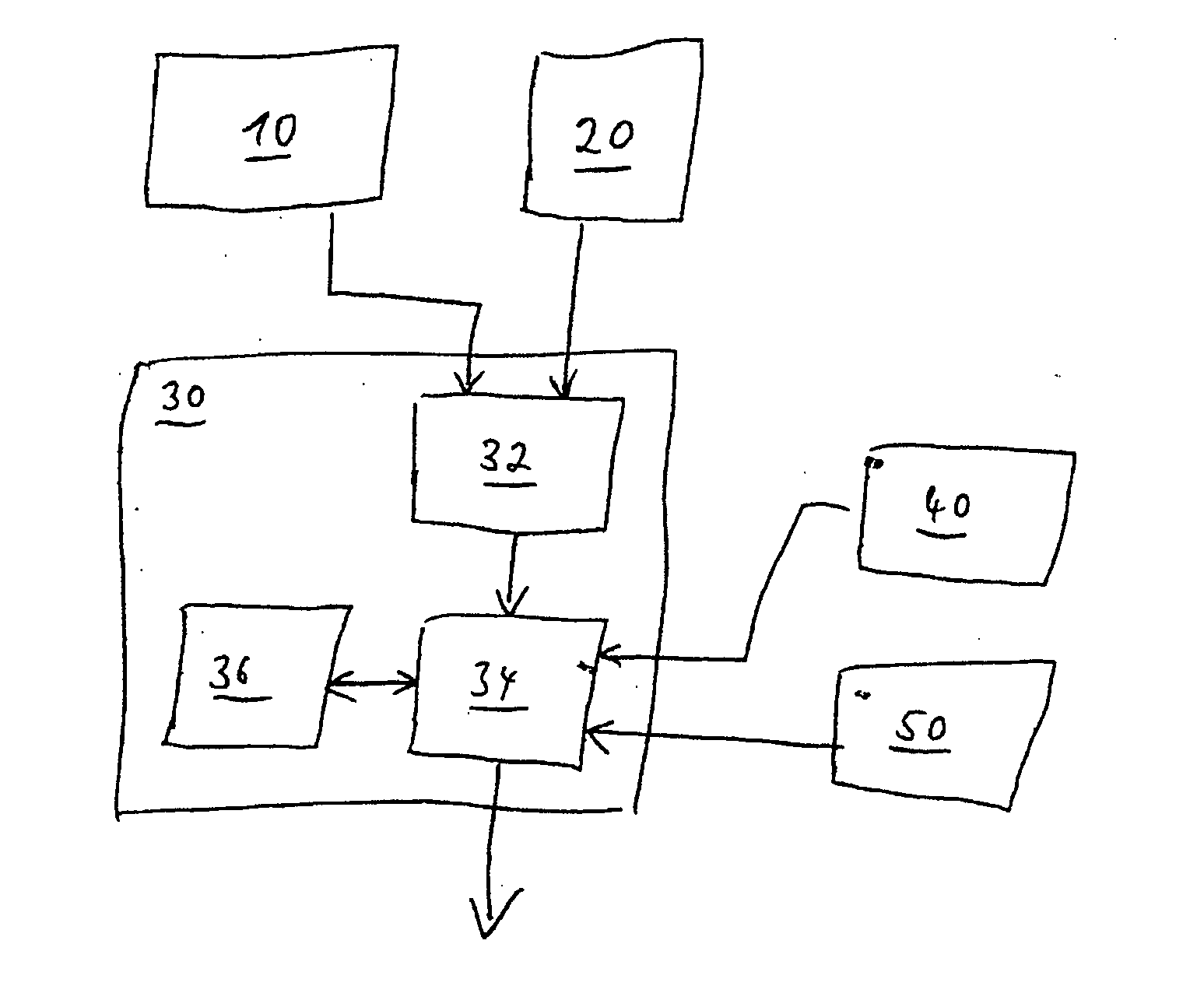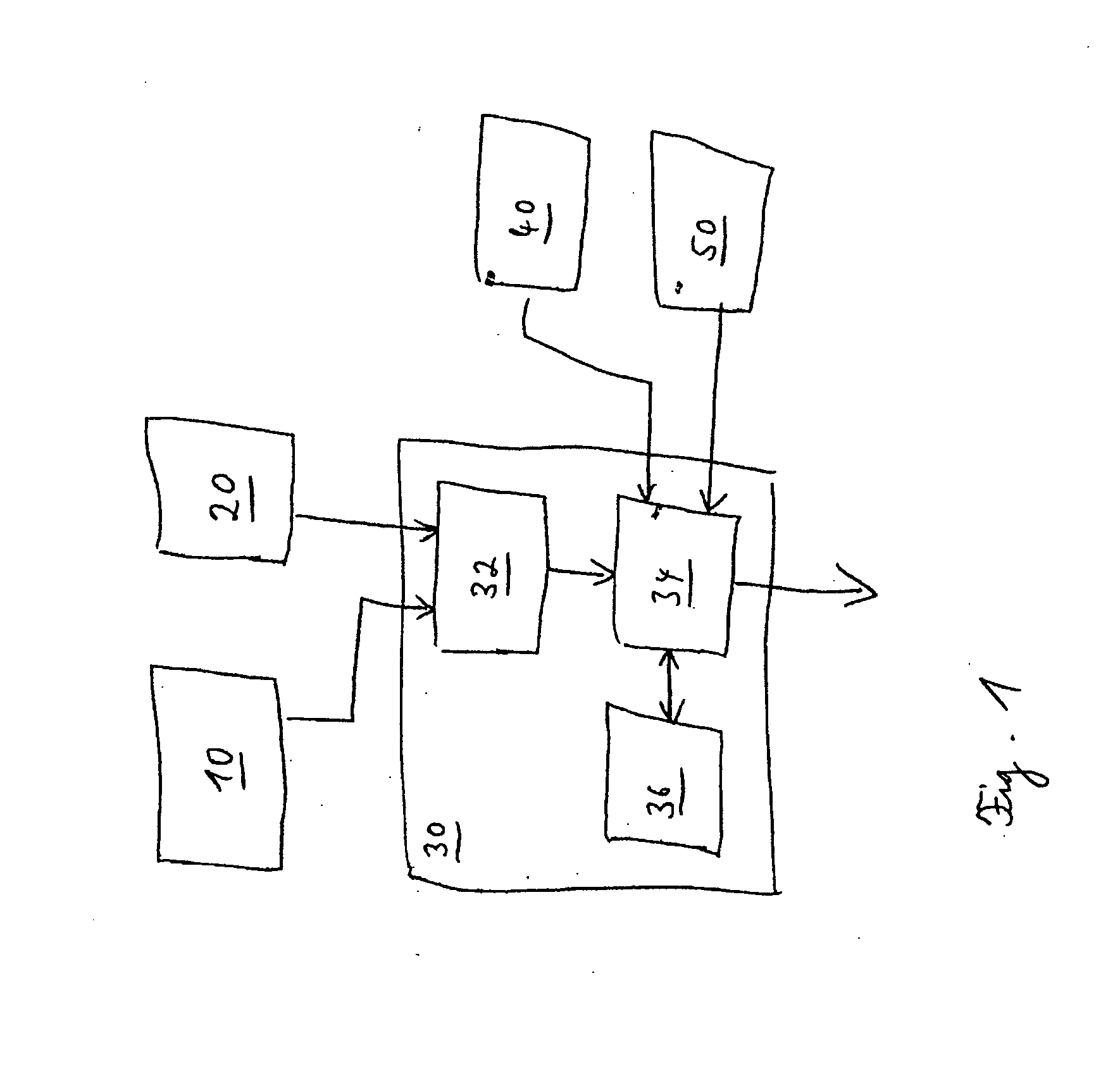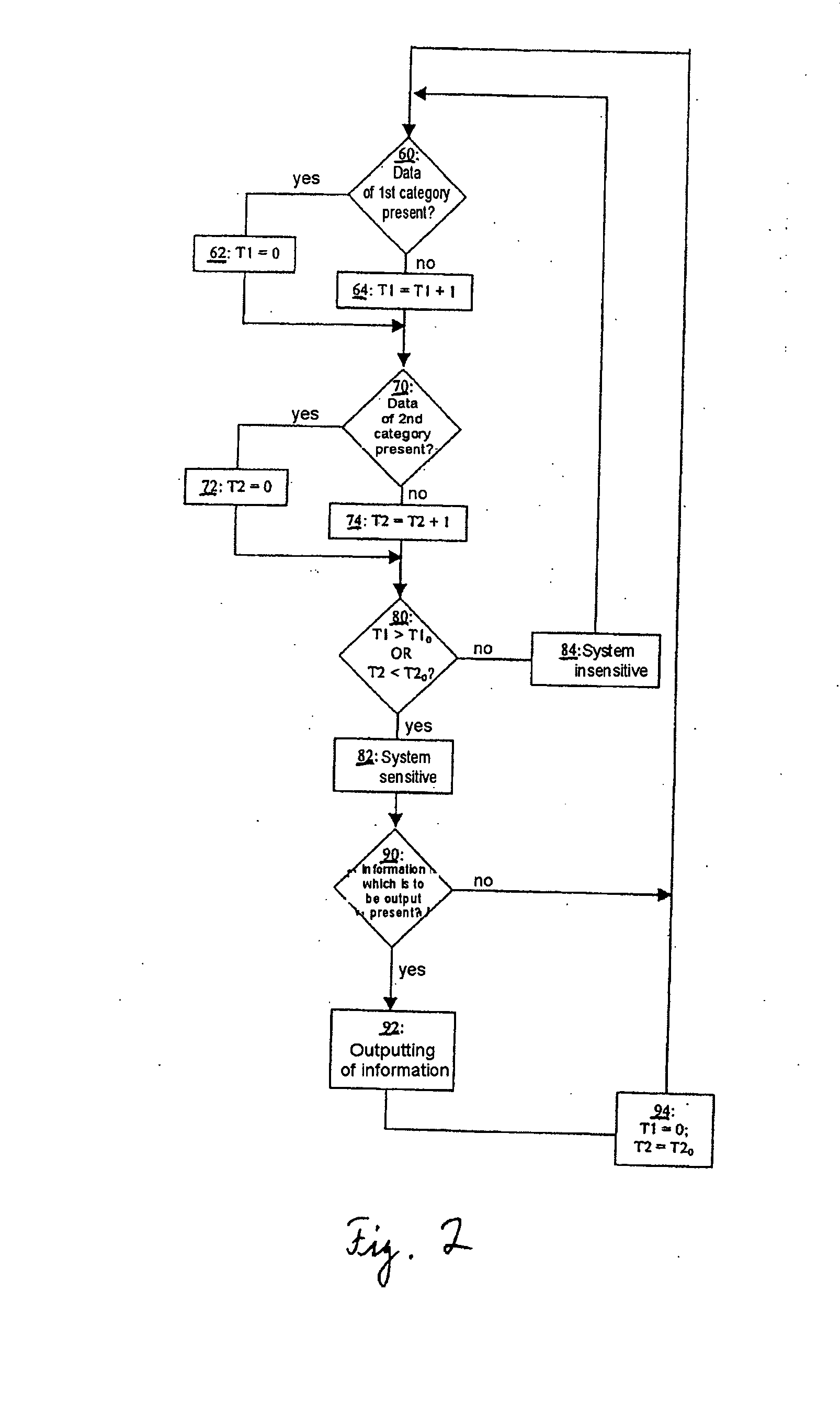[0012] The
advantage of the invention is that the information
system performs the evaluation of data which relates to the state of the driver or data which relates to the behavior of the driver which is already present in the vehicle. Additional devices for recording data which relates to the state of the driver or data which relates to the behavior of the driver, for example a
microphone or camera, are not absolutely necessary.
[0013] The driving systems of the vehicle advantageously include at least one
brake system, at least one
clutch system, at least one
steering system and / or at least one acceleration system. The driving systems can also include, for example, what are referred to as X-by-wire systems, for example drive-by-wire, steer-by-wire or
brake-by-wire systems. In the case of a steer-by-wire system, the
steering wheel can then be replaced, for example, by a
joystick or a double
joystick. In modern vehicles, these driving systems are connected to one another in order to exchange data. This data which is exchanged between the driving systems can then easily be used by the information system as data which relates to the state of the driver and / or as data which relates to the behavior of the driver. This data is, for example, data which is generated by the operation of the
brake pedal,
clutch pedal and / or accelerator pedal and / or the operation of the
steering wheel.
[0014] The comfort systems of the vehicle advantageously include at least one of the systems such as, for example, air-conditioning system,
navigation system, audio system and / or setting system for seat adjustment,
steering wheel adjustment, mirror adjustment and / or for the activation of the window lifter, the steering wheel pushbutton keys and / or the seat memory pushbutton keys. In modern vehicles, these comfort systems are connected to one another in order to exchange data. This data which is exchanged between the comfort systems, can then easily be used by the
navigation system as data which relates to the state of the driver and / or data which relates to the behavior of the driver. This data includes, for example, the control of comfort devices such as air-conditioning system, navigation device, radio and / or the setting of devices inside the vehicle such as seat, steering wheel, mirror etc. Also included as any activation operations on operator controlled elements such as, for example, switching on or off a driver assistance system, for example a system for controlling the distance between vehicles or a parking aid system.
[0015] Evaluating the information, which is to be output, before it is output has the
advantage that only information which is matched to the state and / or the behavior of the driver is output. The information which is to be output can be evaluated, for example, by means of a prioritization of information. The information can be information which requests the vehicle occupants or the driver to undertake a specific action in the short term,
medium term or long term, or which merely needs to be noted. As a function of the evaluation of the information, for example its priority and the state of the driver and / or the behavior of the driver, it is then possible to determine precisely which information is output in this situation, without providing the driver with too much information, which is unnecessary from his point of view.
[0016] The information sources advantageously include what are referred to as driver assistance systems which support the driver in his instantaneous
vehicle driving function. These sources are, for example, a device for controlling the distance between vehicles, a dead angle monitoring unit or generally a lane-changing assistance device, a device for warning of bends and / or a device for automatic
lane detection or for
automatic guidance of the course of the vehicle. Of course, further future driver assistance systems may also be included such as a stop-and-go control device, a
pedestrian detection system and / or a
collision avoidance system. In driver assistance systems it is particularly important for the driver to feel that the information which is output is helpful and not superfluous. As a result, the driver accepts the system and follows its instructions, which contributes to greater traffic safety.
[0017] Information from the driver assistance systems typically request the driver to undertake an action in the short term. Typical information which the driver must react to only in the
medium term or long term, i.e. not before, for example, several seconds have passed. These include typical operational fault messages such as excessively low engine oil, defective lamp, etc., but also for example a
telephone call signal. Typical information which does not request the driver to undertake any particular vehicle-related action include for example, numerous operational state information items about whether specific vehicle components are activated or deactivated at a particular time, but also the music information and speech information which is provided by an electronic entertainment component. Prioritization according to the time in which it is necessary to react to information is advantageous in the evaluation of the information which is to be output.
 Login to View More
Login to View More  Login to View More
Login to View More 


